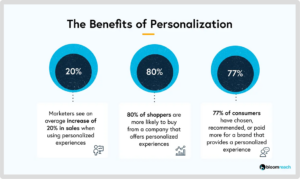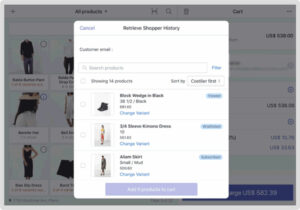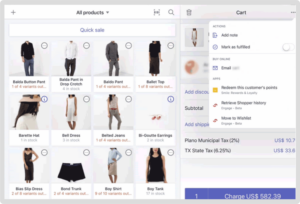Are you tired of sending marketing emails that seem to disappear into the void? Wondering how to craft marketing emails that wow your customers and boost revenue? Curious about leveraging data to send hyper-relevant messages that actually get opened and convert?
You’re in the right place. In this definitive guide, we’ll show you exactly how to harness the power of data to create marketing messages that speak directly to your customers’ needs and interests. We’ll also dive into key e-commerce email strategies, marketing techniques, and email deliverability tips to ensure your messages reach the inbox, are opened, and read.
Harness these insights, and you’ve got the recipe for marketing message magic—sky-high open rates, click-throughs, and conversions that seriously move the revenue needle for your e-commerce biz.
The answers lie in data-driven e-commerce email marketing. You need to understand customer behavior to segment customers, and then personalize your messaging to various segments. If done right, email marketing drives more conversions than any other marketing channel, including search and social.
If you’ve had email marketing campaigns that haven’t quite played out like that, maybe the missing piece of the puzzle is audience understanding. When you have insights into user behavior, you can spot patterns, which means you segment effectively. From there, all you need to do is personalize your messaging to the attributes of the segment.
Why Data-Driven Messaging Matters For E-Commerce Email Marketing
Here’s the hard truth: 47% of email recipients open an email based on the subject line alone. Even more alarming? 69% report marketing emails as spam, solely based on the subject line. Yikes.
Personalized emails have an open rate that’s 29% higher and a click-through that’s 41% higher than non-personalized messages. In other words, email campaign personalization is the name of the game.
In fact, we at Swym, have noticed that by personalizing emails based on the data from your customers’ wishlist, you can convert 2X more than the average e-commerce email marketing benchmarks.
The takeaway is clear—when you tailor your messages to what your customers actually care about, engagement and conversions skyrocket.
But to customize effectively, you need rich customer data to work with in the first place.
Unlocking Personalization with Zero & First-Party Data
The key to email engagement lies in understanding customer behavior and creating segments based on this behavior so that you can talk to customers about products (or pricing attributes) that they’re interested in. How do you gain this understanding of customer behavior? With first and zero-part data.
Often, customers willingly provide these nuggets of insights that lend you a direct window into their needs, interests, and intent. Here are some creative ways to collect this golden data:
- 📝 Quizzes: Engage customers with fun, interactive quizzes that reveal their preferences and interests.
- 💬 Conversational Pop-Ups: Use chatbot-style pop-ups to gather insights and guide customers to relevant products.
- 📩 List Sharing: Gain insights into customer networks and relationships when they share their wishlists with others.
- 📋 Post-Purchase Surveys: Ask customers for feedback and preferences after they’ve made a purchase.
- 🗳️ Social Media Polls: Leverage the power of social media to gather opinions and insights from your followers.
- 🎉 Contests: Encourage customers to share information in exchange for a chance to win exciting prizes.
- 🔐 Account Creation: Collect valuable data during the account creation process, such as preferences and demographics.
You can also leverage first-party data from customers’ on-site interactions and purchase history. Some examples:
- ❤️ Wishlists: Analyze products customers save for later to understand their interests and intent.
- 🔔 Back-in-Stock and Low-Stock Notifications: Track which products customers want to be notified about.
- 📩 List Sharing: Gain insights into customer networks and relationships when they share their wishlists with others.
The Art & Science of Data-Driven Marketing Messaging
Crafting data-driven marketing messages starts with deeply understanding your customers’ behaviors, interests, and intent signals.
You’ll want to analyze all that juicy customer data to identify patterns. For example, think of customers who make frequent purchases versus customers who have only ever made one purchase on your platform. What kind of learnings can you apply from the frequent buyer segment? Do they have anything in common with the one-time buyer segment, and if yes, can you use that information in your messaging?
This will help you arrive at segments, and the messaging strategy for these segments, such as:
- 🛍️ Frequent shoppers vs. one-time buyers
Let’s say you’re an e-commerce website that sells clothing and accessories. You delve into your buyer data and find that while both segments purchased sneakers, the frequent buyer section has since purchased workout attire. From there, they moved to athleisure and eventually even began purchasing handbags, laptop bags, and other types of clothing from your website.
With this intel in-hand, you now have a strategy to apply to your one-time buyer segment that might actually work: you could nudge them with marketing content that goes something like, “We hope our XYZ sneakers are helping you achieve your fitness goals. Why not add a touch of style to your workout with our XYZ track-suit?”
- 👀 Browsing vs. ready to purchase
If you look closely at your customer data, you will be able to segment buyers into those who tend to browse deeply (and add to their carts or Wishlists without taking any further action) and others who tend to purchase immediately. It is possible that the deep browsers are price-sensitive and while they may have found several “brown laptop cases”, as per their search, they might be looking for the said product at a lower price point.
If you overlap this data with data from buyers who have opted in for prior “share with a friend for a discount on your next purchase” initiatives, you will be able to zero on price-sensitive buyers. You could try sharing a promo code that might encourage them to go ahead and complete their purchase.
Other ways to nudge a slow-to-buy customer to a purchase action include the dissemination of price drop alerts and low stock alerts.
- 🔥 Engaging with certain product categories
This is one of the easiest segments to carve out and cater to. The segment that only buys shoes from you, for example, can be easily engaged with a new shoe styles alert, or you can even try to pique their interest in other items like, “Wouldn’t these socks/ this clutch purse pair perfectly with those shoes you just bought?”
- 🎁 Shopping for themselves vs. gifts
Understanding who your customer is shopping for can also contextualize your messaging. You have customers who are buying for themselves and others who are purchasing gifts. Still others are wishlisting items to share preferences with friends, family (and even colleagues, especially when that Secret Santa initiative comes around). Understanding this nuance can help you create segments like frequent gifters. You can promote gift cards to this segment, or even celebrate their generosity and encourage them to make a purchase with a “we’re rewarding your generous nature with this discount coupon” type of move.
For customers wishlisting their own items endlessly, you might want to nudge them to share their wishlists with loved ones, especially if you have their birthday on record, and also during the festive season. Wishlist sharing has incredible social-proof-linked benefits for your brand—it’s literally like getting a personal reference.
- 📱 Active on specific channels
If customer X is active on Instagram as per your third-party data or if they frequently visit your website from an Instagram ad, you know to keep targeting this customer via the same channel. Channel-based segmentation can help you optimize campaign-based spending because you message to customers when and where they are interested in hearing from you. For example; you might have one segment for email marketing and another for social-based marketing (further divided based on platform of choice).
At Swym, our customers try these moves every day, and the results of these speak for themselves:
- 🛒 FOMO-driven sales from low stock alerts on wishlisted items
- 🔥 Waitlist signups converting to pre-orders at 0.77%
- 💸 Price drop alerts recovering abandoned carts
- 👯♀️ 92.64% click rate and 6.04% conversion rate on shared list product recommendations
- 🔔 12.56% click rate on back-in-stock alerts
Best Practices For Weaving Data into Your Marketing Messages
- Personalize and optimize subject lines with the recipient’s name, location, or other relevant info to boost open rates.
- Use techniques like list segmentation and third-party tools to group customers with similar attributes and tailor your messaging for maximum impact.
- To ensure your emails actually reach your subscribers’ inboxes, implement email deliverability best practices like using a reputable ESP, maintaining a clean list, and authenticating your domain.
- Tailor product recommendations based on the customer’s wishlist, back-in-stock notification requests, purchase history, or browsing behavior.
- Customize offers & incentives to each segment, like exclusive discounts for VIPs or free shipping for first-time buyers.
- Trigger timely messages based on customer actions, like abandoning a cart or engaging with a product.
Psst! Don’t forget to ensure mobile-responsive design—recipients might be opening your emails on the go.
The key is to strike the right balance between personalization and scalability. For one-off campaigns, you can get ultra-granular with your targeting and messaging. But for always-on flows, you’ll want to lean on e-commerce email marketing automation to communicate at scale.
Automate to message at scale
So how do you get all the data from apps that collect data (like Wishlist apps, Notify Me apps and Review apps) to your preferred platforms for email marketing (like MailChimp, Yotpo, and Listrak)?
Some apps integrate with one another seamlessly, while in other cases you may need to manually extract data from one app, and utilize it to set up campaigns on email and messaging apps.
With Swym it’s easy to set up personalized email campaigns based on your customer’s wishlist activity, whether you integrate and launch your campaign automatically, or download data and set up your campaign manually.
Of course, as you begin to personalize messages, don’t forget the basic rules of marketing messaging, such as:
- Managing the email frequency, which is crucial to maintain deliverability i.e. to avoid becoming an annoyance—too few and you might lose engagement, too many, and you risk annoying your audience and have them mark your emails as spam or unsubscribing, so use your metrics to strike the perfect balance.
- Honing clear call-to-action (CTA) strategies so you can entice readers to take the next step, whether that’s making a purchase, reading a blog post, or sharing on social media.
The bottomline is this: The more you can make your messages feel like a one-on-one conversation vs. a mass blast, the better. With Sywm it’s easy to achieve powerful email triggers that feel like one-on-one messages. All thanks to our Wishlist app, which gets you all the data you need to spot patterns and personalize like a pro. You can also achieve seamless integration and email automation for your personalized marketing campaigns using messaging platforms like Klaviyo, Yotpo, Mailchimp, Omnisend, Attentive, Ometria, and Iterable.
Ready to get started with data-driven personalization? Download Swym and bite into customer insights now. Happy converting!
Header image Source
People also ask
Why is it important for businesses to adopt a data-driven marketing approach?
Answer: By diving into the data, you can gain crystal-clear insights into your audience’s needs, preferences, and behaviors. This empowers you to optimize your e-commerce email marketing strategies and skyrocket your ROI, rather than relying on guesswork or gut feelings.
How can data-informed messaging optimize conversion rates?
Answer: When you leverage data to deeply understand your customers, you can craft hyper-personalized messages that strike a chord. By delivering the right content to the right people at the perfect moment, you’ll see those conversion rates soar.
What ethical considerations should you keep in mind when using customer data for marketing?
Answer: With great data comes great responsibility. To maintain customer trust, prioritizing data privacy and security is non-negotiable. This means getting clear consent, complying with regulations like GDPR and CCPA, and being totally transparent about data usage. Always give customers control over their data and the ability to opt out. Also, consider email frequency management and achieve the right balance You don’t to be forgotten, but you also want to be perceived as a pest.
How does continuous testing and optimization fuel data-driven marketing success?
Answer: The marketing landscape is always evolving, and so are your customers’ needs. By regularly testing different email engagement strategies, messages, and tactics, you can stay agile and adapt to what resonates best. Analyze the results, iterate, and watch your marketing efforts level up over time. Continuously monitoring email marketing metrics allows you to identify improvement opportunities and double down on what’s working.





